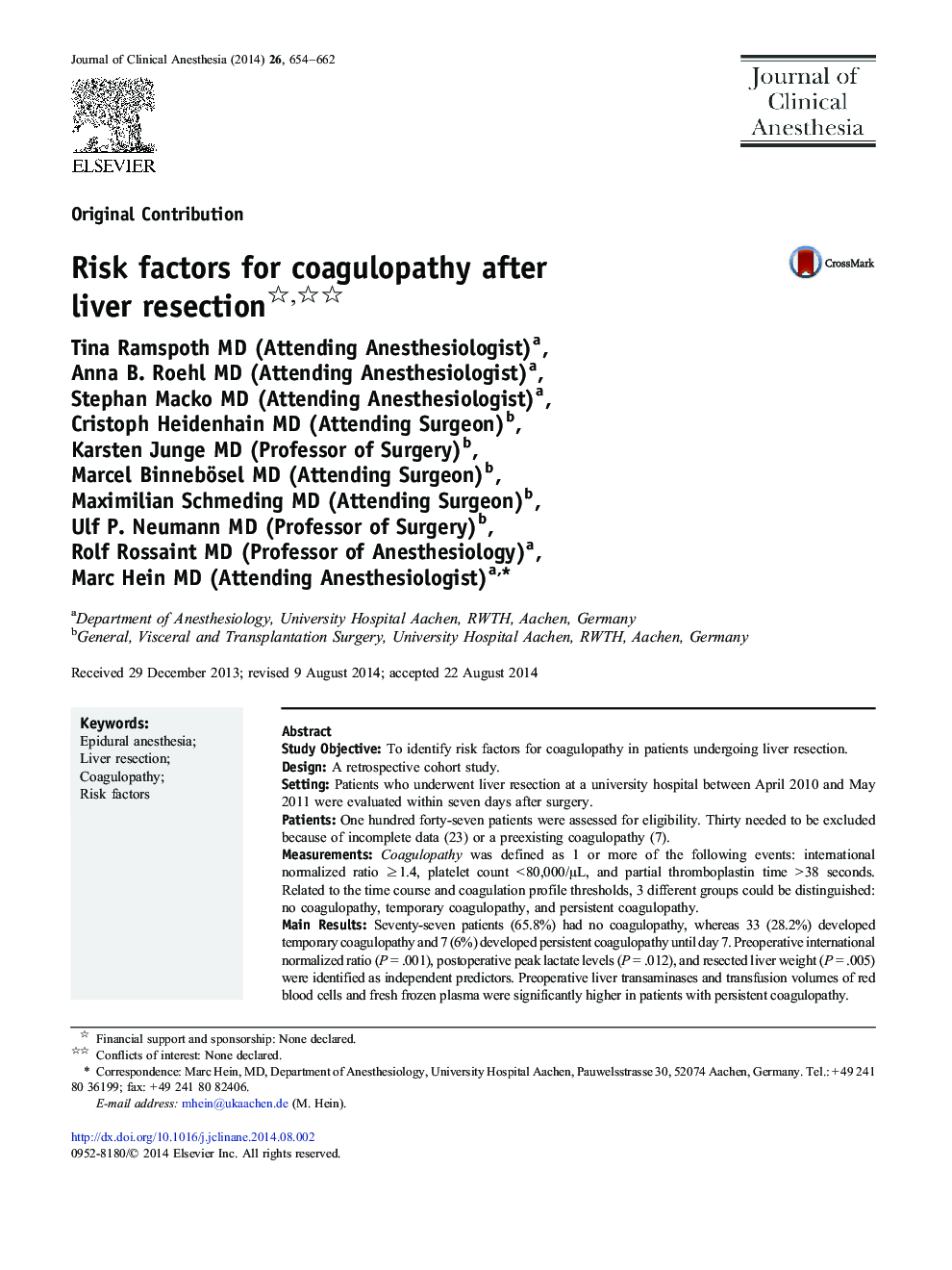| Article ID | Journal | Published Year | Pages | File Type |
|---|---|---|---|---|
| 2762520 | Journal of Clinical Anesthesia | 2014 | 9 Pages |
•Increased risk of coagulopathy in patients scheduled for liver resection.•Risk factors: extended resection, preexisting liver disease, and impaired regeneration.•Predictors: by resection weight, preoperative international normalized ratio, and postoperative peak lactate levels.
Study ObjectiveTo identify risk factors for coagulopathy in patients undergoing liver resection.DesignA retrospective cohort study.SettingPatients who underwent liver resection at a university hospital between April 2010 and May 2011 were evaluated within seven days after surgery.PatientsOne hundred forty-seven patients were assessed for eligibility. Thirty needed to be excluded because of incomplete data (23) or a preexisting coagulopathy (7).MeasurementsCoagulopathy was defined as 1 or more of the following events: international normalized ratio ≥ 1.4, platelet count < 80,000/μL, and partial thromboplastin time > 38 seconds. Related to the time course and coagulation profile thresholds, 3 different groups could be distinguished: no coagulopathy, temporary coagulopathy, and persistent coagulopathy.Main ResultsSeventy-seven patients (65.8%) had no coagulopathy, whereas 33 (28.2%) developed temporary coagulopathy and 7 (6%) developed persistent coagulopathy until day 7. Preoperative international normalized ratio (P = .001), postoperative peak lactate levels (P = .012), and resected liver weight (P = .005) were identified as independent predictors. Preoperative liver transaminases and transfusion volumes of red blood cells and fresh frozen plasma were significantly higher in patients with persistent coagulopathy.ConclusionsEpidural anesthesia is feasible in patients scheduled for liver resection. Caution should be observed for patients with extended resection (≥ 3 segments) and increased postoperative lactate. In patients with preexisting liver disease, epidural catheters should be avoided.
